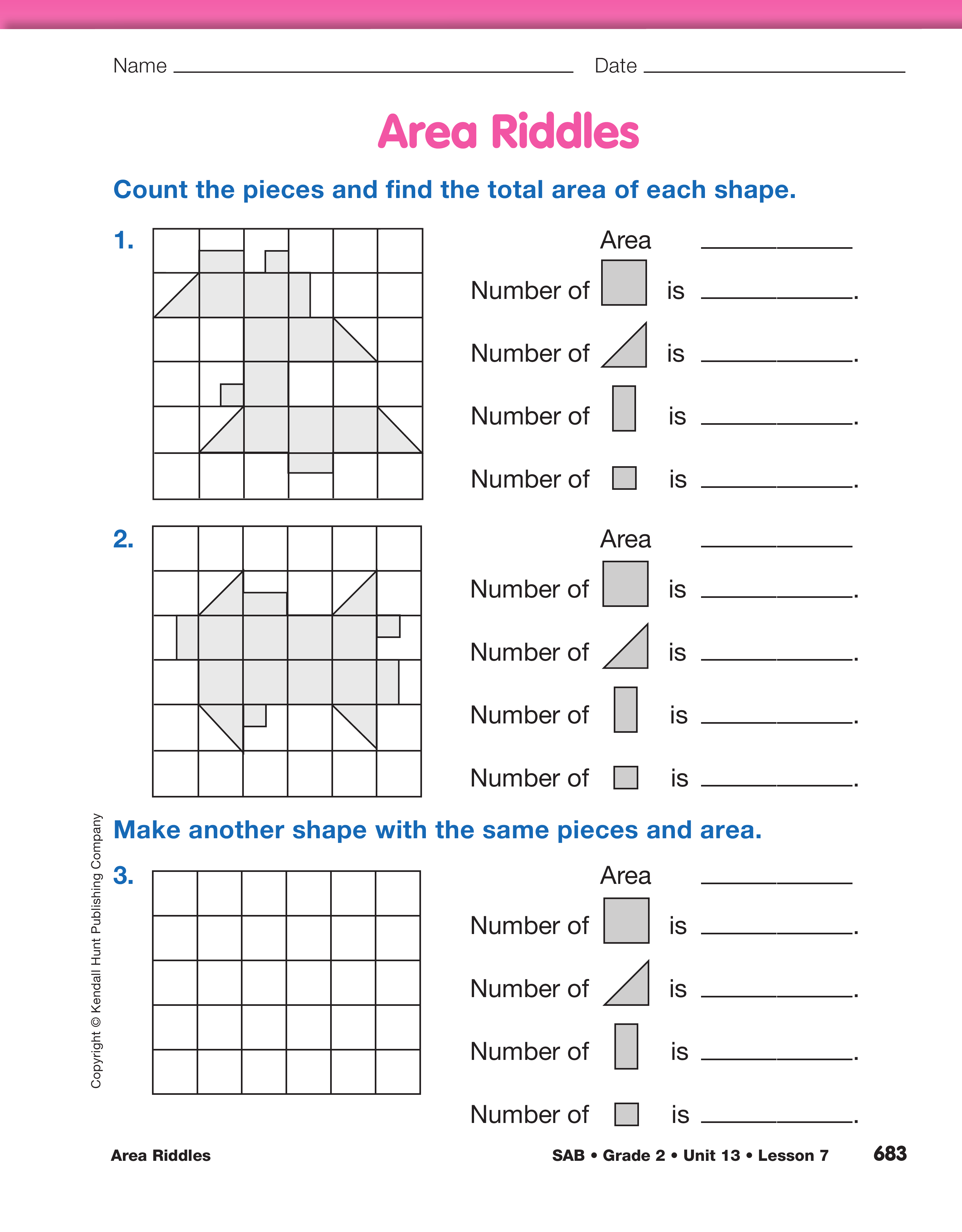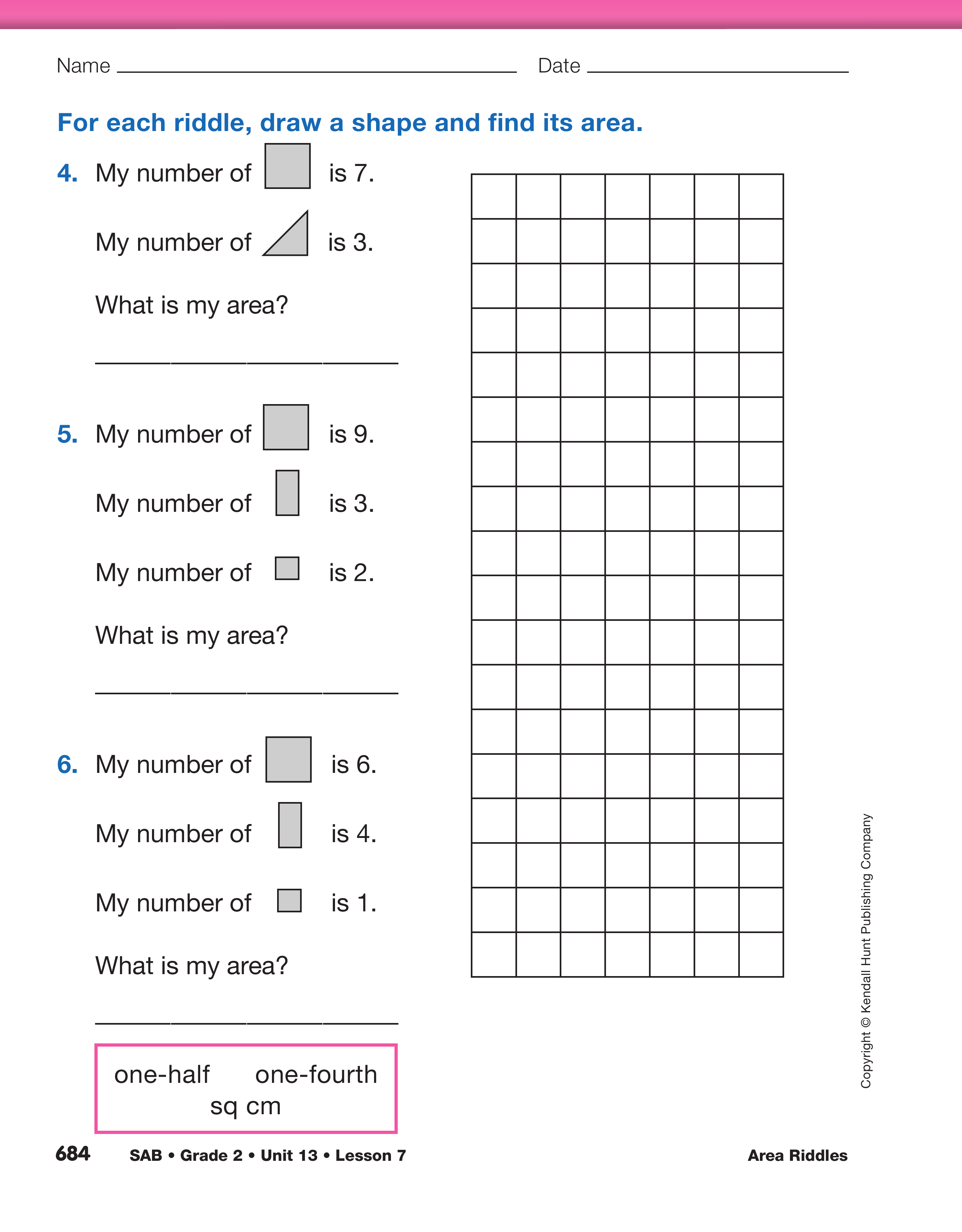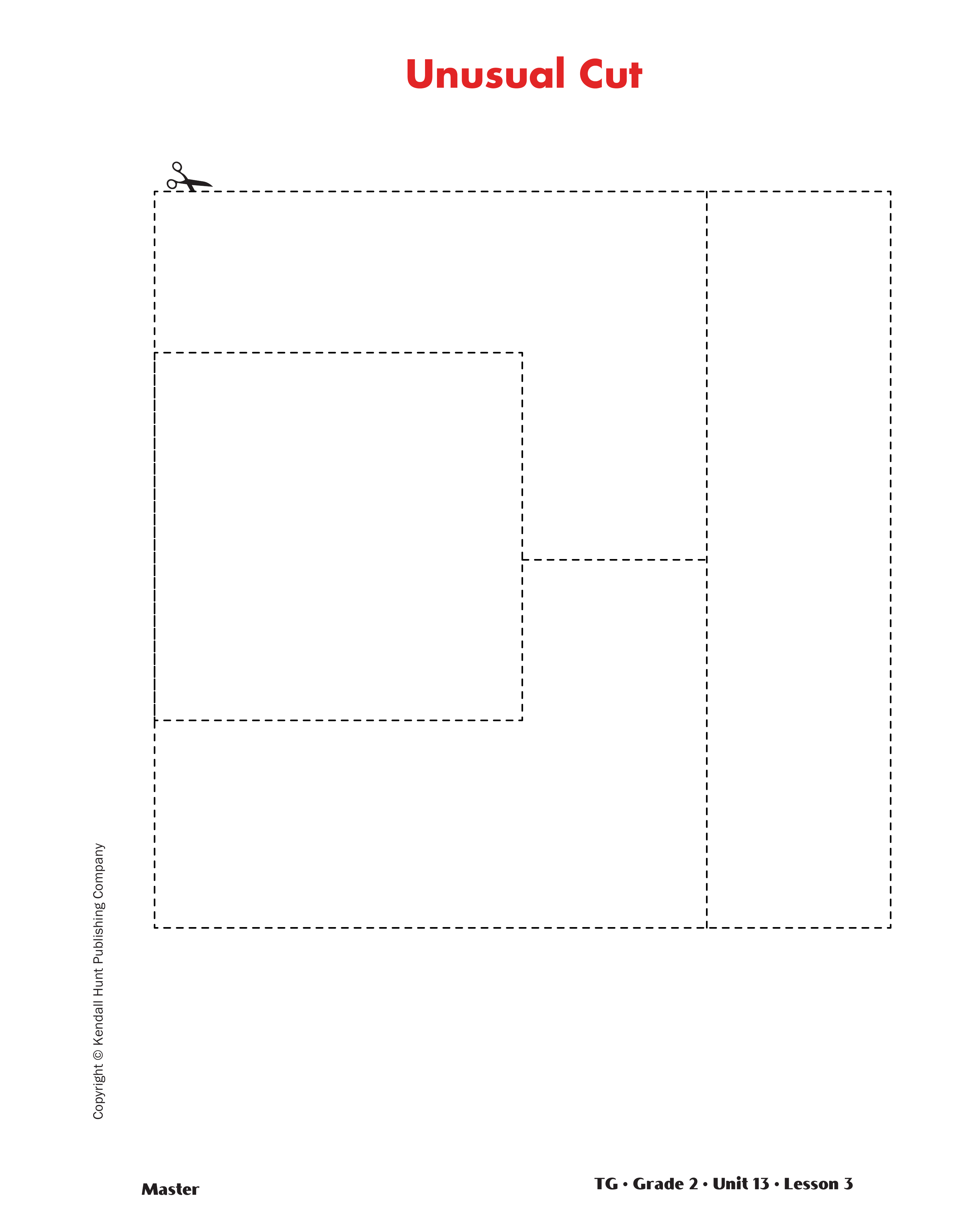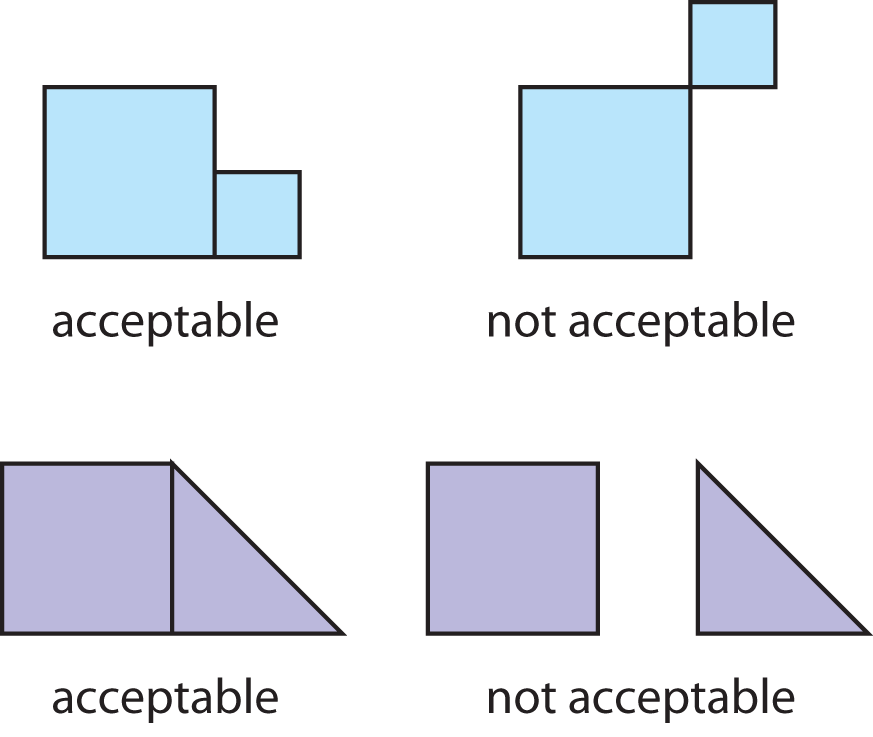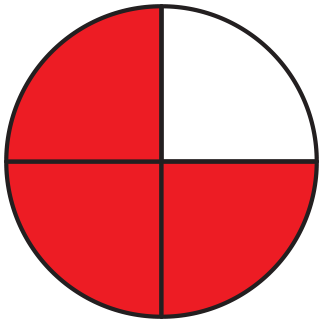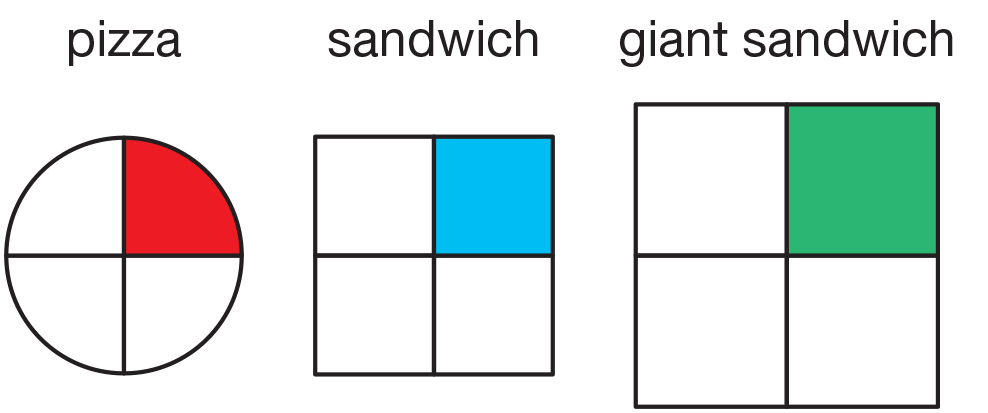Introduce Area Riddles. Display and direct students
to the Area Riddles page in the Student Activity
Book.
- Describe how the two shapes in Questions 1 and 2 are alike and different. (Possible response: The
shapes look different but are made up of similar
pieces like the whole square centimeters and
half square centimeters.)
Select student volunteers to help count the pieces in
the shapes and fill in the missing information in
Questions 1 and 2 as all students follow along. Each
shape has 8 square centimeters, 4 triangular halves,
3 rectangular halves, and 2 fourths. Once this information
is tallied, have students work with a partner
to find the area of each shape. Each shape has a total
area of 12 square centimeters.
Referring to the display, ask:
- Show us how you found the area of the shape in
Question 1. (Possible response: There are 8 whole
square centimeters and 7 halves. 7 halves make 3
more whole square centimeters with 1 half
leftover. There are 2 fourths and that makes
another half. I put the leftover half with the
2 fourths to make another whole square
centimeter. 8 + 3 + half + two fourths = 8 + 3
+ 1. That makes 12 square centimeters.)
- Show us how you found the area of the shape in
Question 2. (Possible response: There were two
rows of 4 whole square centimeters. That makes
8 square centimeters. Then I put all the triangle
halves together. That makes 2 whole square centimeters.
Then I put all the rectangle halves
together to make another whole. I had one half
left over so I put it together with the two fourth
pieces. That made another whole square centimeter.
I added up all the whole square centimeters:
8 + 2 + 1 + 1 = 12 square centimeters.)
- What do you notice about the two shapes? (They
have the same area, but they look different.)
- Can two different shapes have the same area?
How do you know? (Yes; I can count the square
centimeters in both shapes and they both have an
area of 12 square centimeters.)
Encourage students to use the grid space in
Question 3 to draw an additional shape with the
same combination of pieces (8 square centimeters,
4 triangular halves, 3 rectangular halves, 2 fourths)
and the same area (12 sq cm) as the shapes in the
previous questions. Students should compare their
shapes to reinforce the idea that different shapes can
have the same area.
Create Area Riddles. Assign Questions 4–6 for
students to complete individually. Students will
make their own area riddles. Using a display of the
Centimeter Grid Paper Master, establish rules for
connecting the pieces as shown in Figure 1. Then
allow time for students to draw the shapes for their
riddles. Note that the areas for the shapes in
Question 4 and 6 are mixed numbers, 812 sq cm and
814 sq cm. Students may use words or symbols to
describe the fractional parts.













